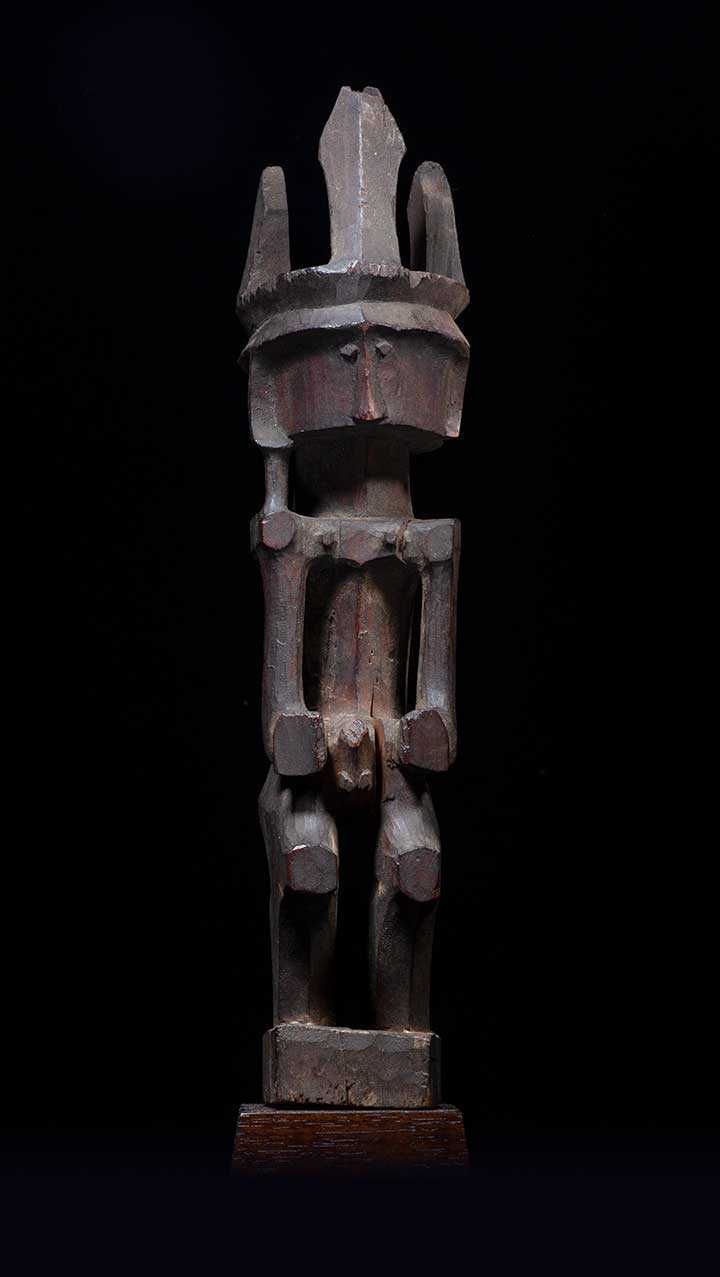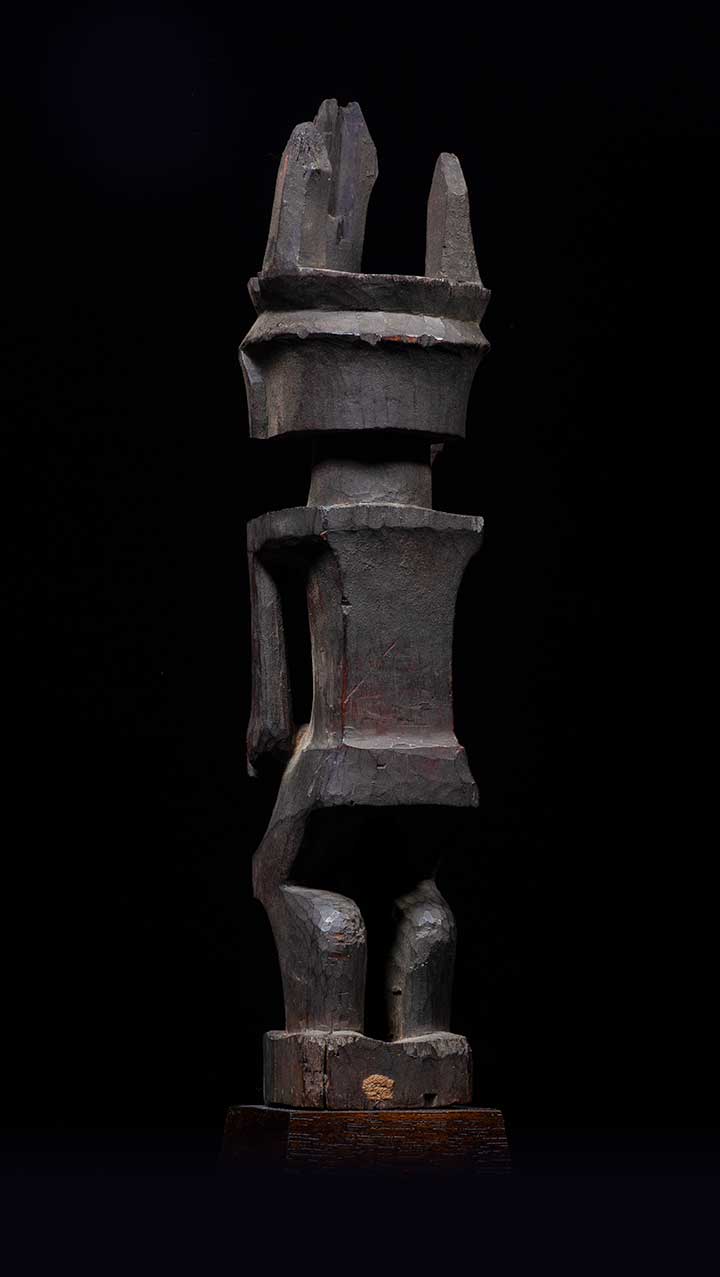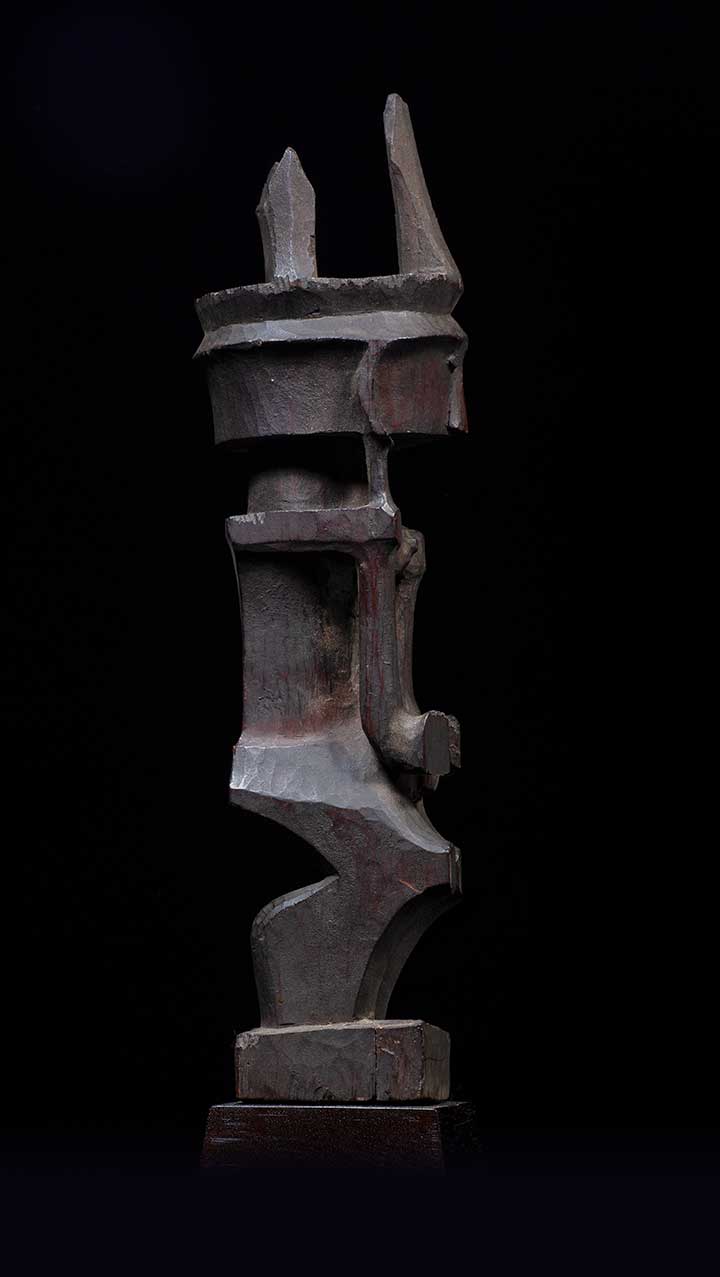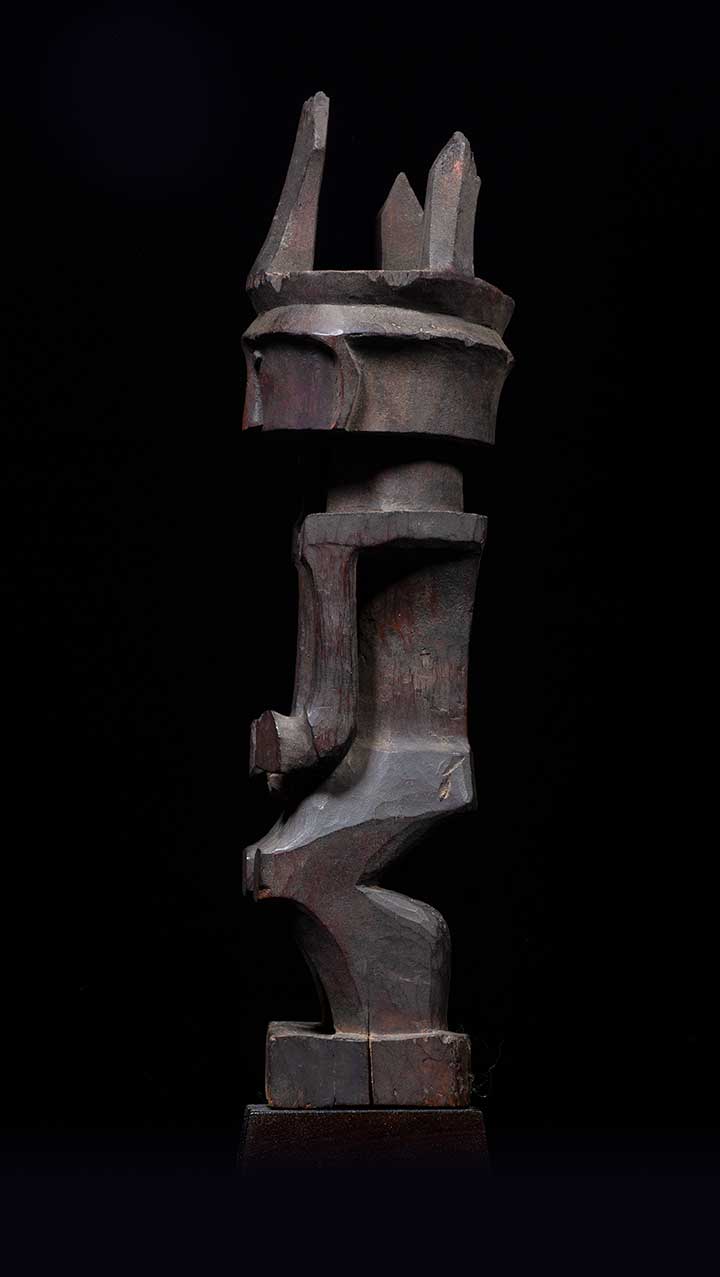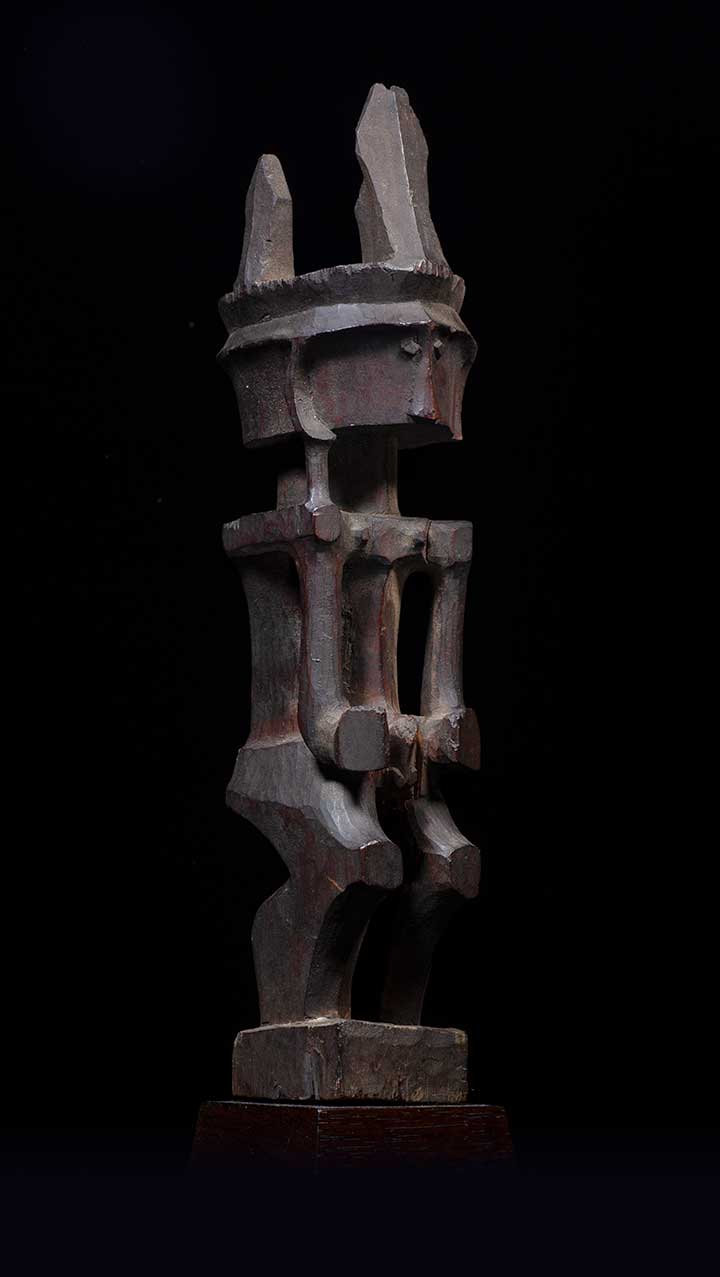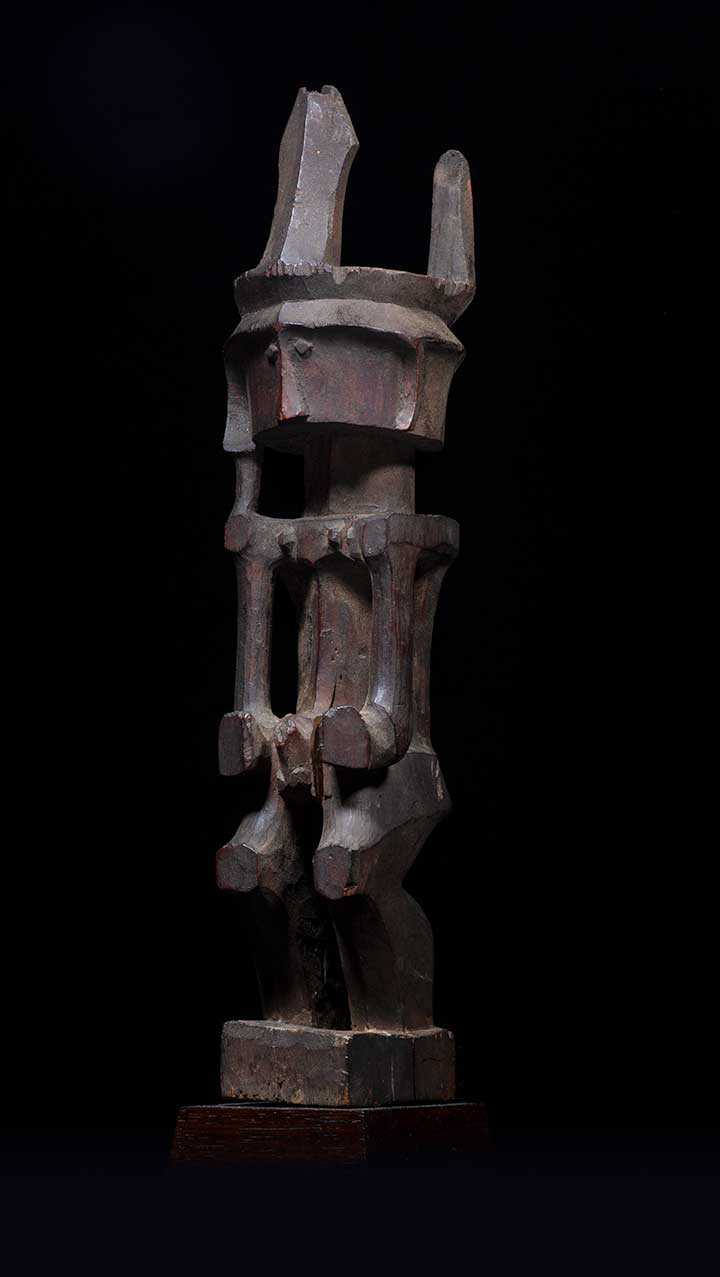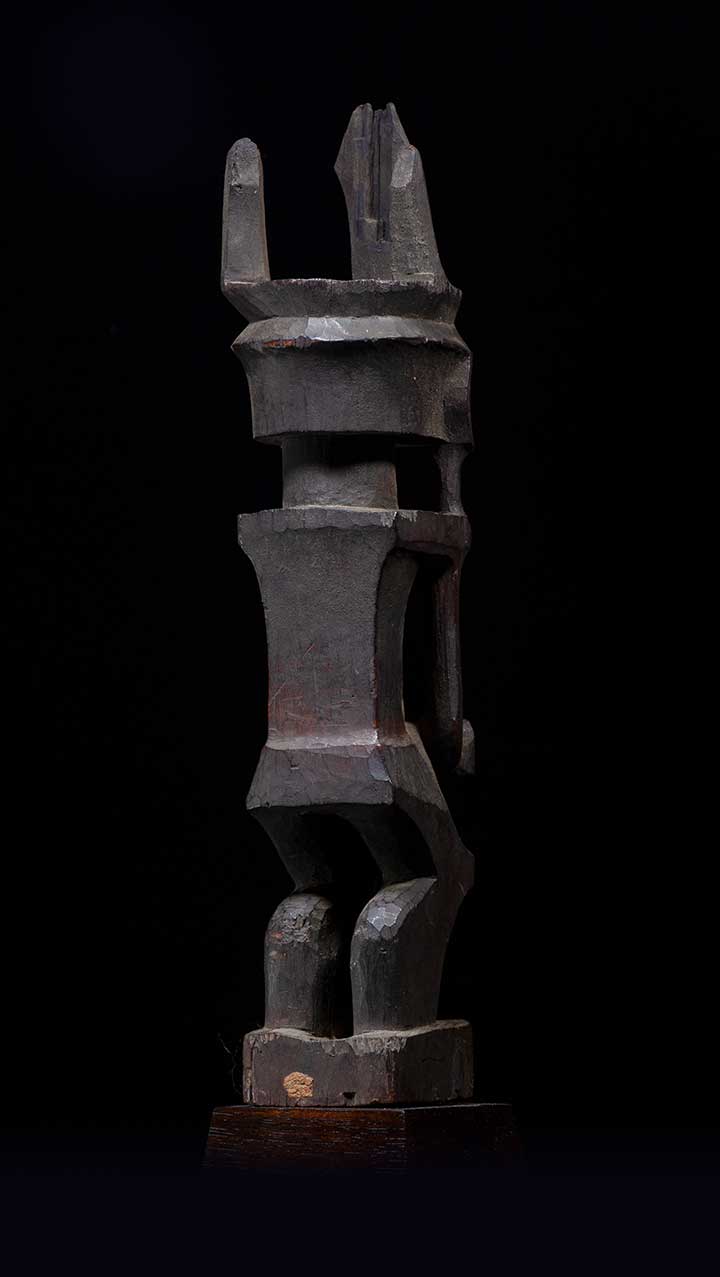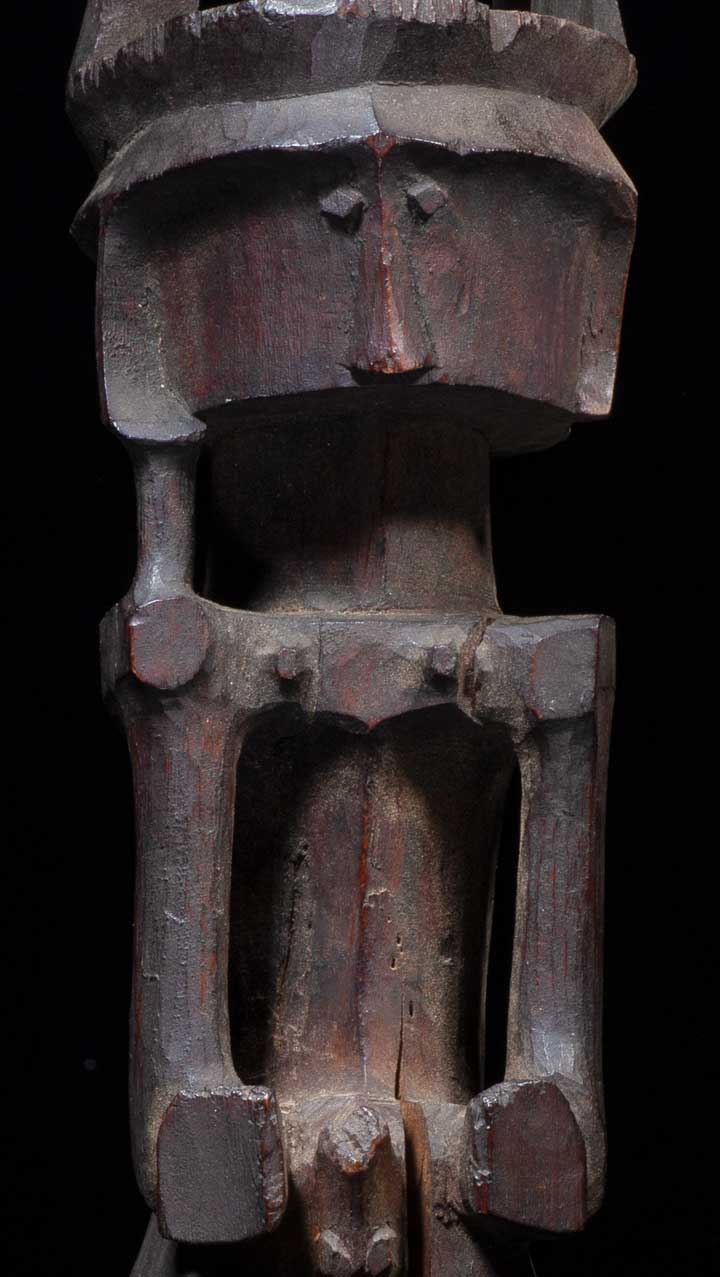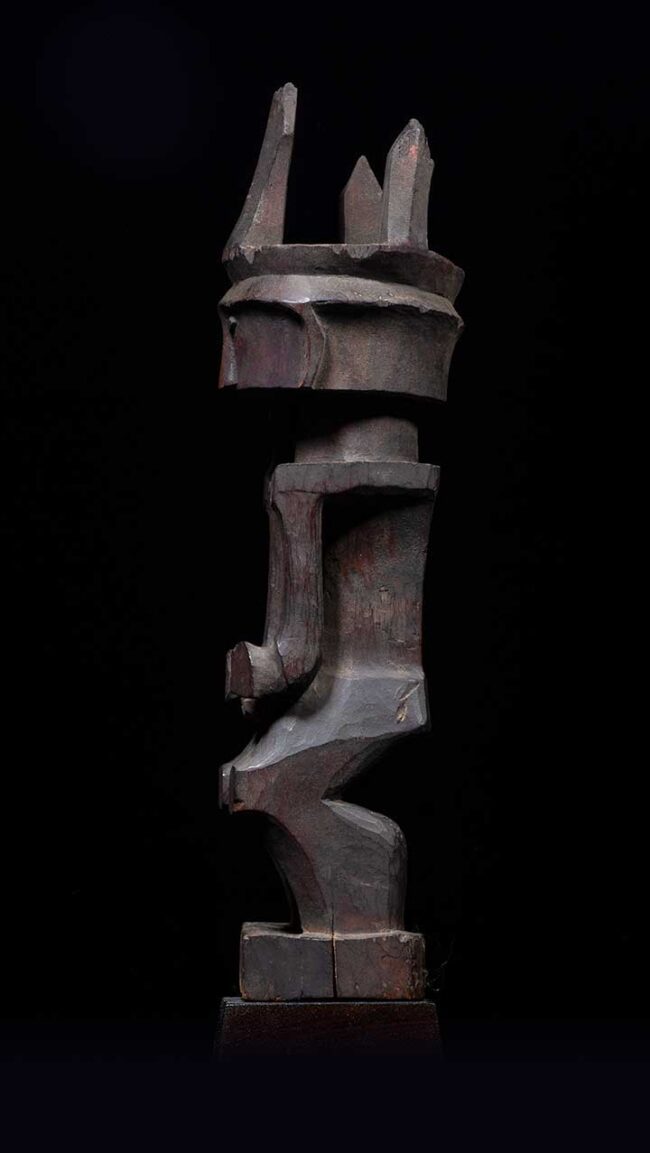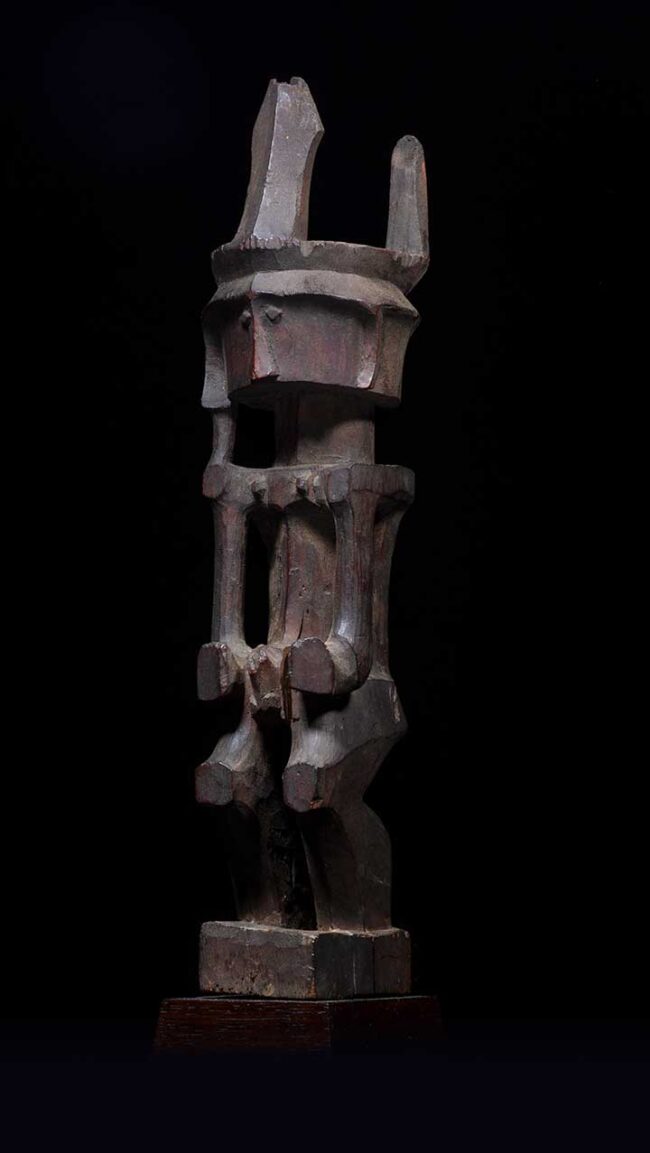Ancestor Figure, Adu Zatua
Central Nias, Indonesia
19th c.
Previous collection: Bill Evans, Sydney
This Adu Zatua figure originated in the central region of Nias Island, Indonesia. Its distinct stylized, cubistic form and pronounced joint marks on the shoulders and knees set it apart. While Adu Zatua figures from central Nias feature a blocky, abstracted style with emphasis on geometric shapes and bold lines, those from North and South Nias lean towards a more naturalistic style, highlighting realistic human features and anatomical details. These stylistic differences can be attributed to cultural and historical factors. Historically, the central region of Nias remained isolated due to its rugged terrain, fostering art forms influenced by internal cultural and artistic traditions rather than external influences. Thus, the stylized, abstracted form of the Adu Zatua figure from central Nias reflects this insular artistic tradition. On the other hand, North and South Nias had more connections to the outside world through trade, allowing outside artistic styles and techniques to influence the more naturalistic Adu Zatua figures found in those regions. Traditionally, Adu Zatua figures were used in ancestor worship ceremonies and to communicate with the spirits of the dead. These figures were believed to possess the power to channel ancestral spirits, providing guidance and wisdom. The cubistic stylization of Adu Zatua figures from central Nias aimed to bridge the physical world with the spiritual realm. By emphasizing bold shapes and abstract forms, the carvers infused these figures with otherworldliness and mystery. Consequently, the figures became powerful symbols of Nias culture and artistic traditions.
Ancestor Figure, Adu Zatua
Central Nias, Indonesia
19th c.
Previous collection: Bill Evans, Sydney
This Adu Zatua figure originated in the central region of Nias Island, Indonesia. Its distinct stylized, cubistic form and pronounced joint marks on the shoulders and knees set it apart. While Adu Zatua figures from central Nias feature a blocky, abstracted style with emphasis on geometric shapes and bold lines, those from North and South Nias lean towards a more naturalistic style, highlighting realistic human features and anatomical details. These stylistic differences can be attributed to cultural and historical factors. Historically, the central region of Nias remained isolated due to its rugged terrain, fostering art forms influenced by internal cultural and artistic traditions rather than external influences. Thus, the stylized, abstracted form of the Adu Zatua figure from central Nias reflects this insular artistic tradition. On the other hand, North and South Nias had more connections to the outside world through trade, allowing outside artistic styles and techniques to influence the more naturalistic Adu Zatua figures found in those regions. Traditionally, Adu Zatua figures were used in ancestor worship ceremonies and to communicate with the spirits of the dead. These figures were believed to possess the power to channel ancestral spirits, providing guidance and wisdom. The cubistic stylization of Adu Zatua figures from central Nias aimed to bridge the physical world with the spiritual realm. By emphasizing bold shapes and abstract forms, the carvers infused these figures with otherworldliness and mystery. Consequently, the figures became powerful symbols of Nias culture and artistic traditions.



